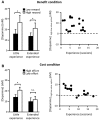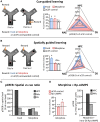Heads for learning, tails for memory: reward, reinforcement and a role of dopamine in determining behavioral relevance across multiple timescales
- PMID: 24130514
- PMCID: PMC3795326
- DOI: 10.3389/fnins.2013.00175
Heads for learning, tails for memory: reward, reinforcement and a role of dopamine in determining behavioral relevance across multiple timescales
Abstract
Dopamine has long been tightly associated with aspects of reinforcement learning and motivation in simple situations where there are a limited number of stimuli to guide behavior and constrained range of outcomes. In naturalistic situations, however, there are many potential cues and foraging strategies that could be adopted, and it is critical that animals determine what might be behaviorally relevant in such complex environments. This requires not only detecting discrepancies with what they have recently experienced, but also identifying similarities with past experiences stored in memory. Here, we review what role dopamine might play in determining how and when to learn about the world, and how to develop choice policies appropriate to the situation faced. We discuss evidence that dopamine is shaped by motivation and memory and in turn shapes reward-based memory formation. In particular, we suggest that hippocampal-striatal-dopamine networks may interact to determine how surprising the world is and to either inhibit or promote actions at time of behavioral uncertainty.
Keywords: dopamine; hippocampus; long term memory; nucleus accumbens; reinforcement learning; reward.
Figures


References
Publication types
LinkOut - more resources
Full Text Sources
Other Literature Sources
Miscellaneous

